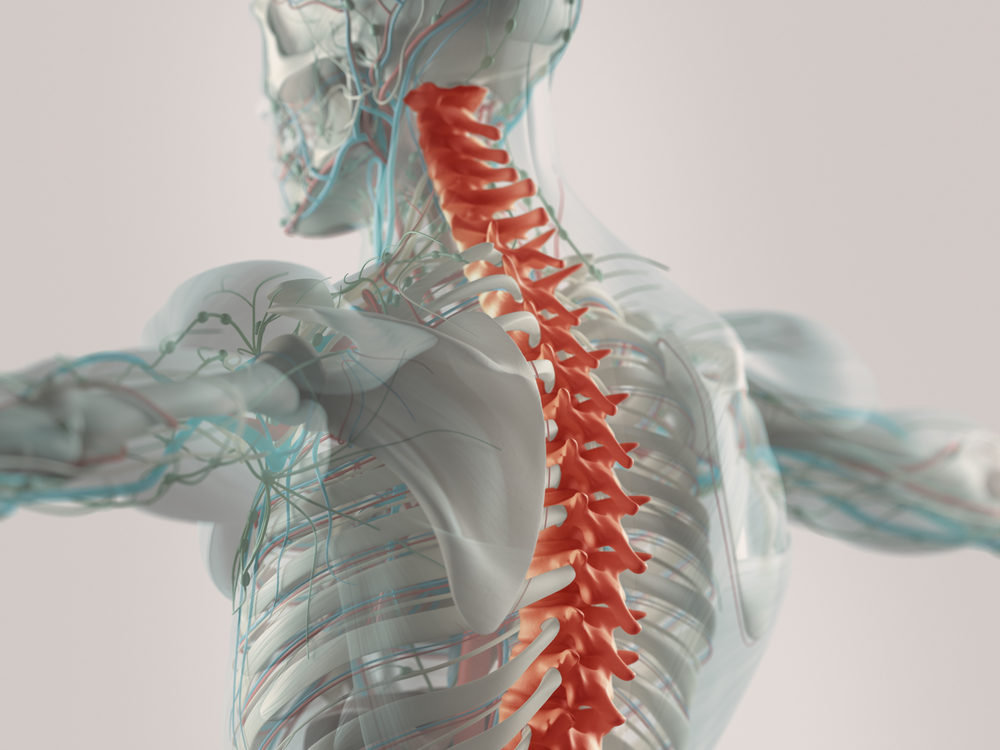
Trying to put your life back together after a serious car accident can come with a wide variety of challenges, particularly if you sustained a spinal cord injury. Car accidents cause roughly 250,000 spinal cord injuries and 36.5% of all cases of paralysis every year. About 47% of these victims experience quadriplegia, a paralysis of the legs and arms, or paraplegia, paralysis of only the legs. These two catastrophic medical conditions can be the result of brain or spinal cord damage and are often misunderstood and misrepresented. If you or someone you know was diagnosed with paraplegia or quadriplegia after a car accident that they did not cause, contact the experienced Portsmouth personal injury lawyers at Shapiro, Washburn & Sharp as soon as possible.
Degree of Paralysis and Location of Injury
Spinal cord damage often leads to a loss of nerve function below the injury site. When an injury occurs high on the spinal cord, it results in the paralysis of all limbs and most of the body. An injury to the bottom part of the spinal cord affects the legs and lower part of the body. This happens because the signals to and from the brain cannot pass past the point of injury.
Paralysis can either be incomplete or complete. Incomplete paralysis means that some, but not all, signals to and from the brain are disrupted. Victims can retain some capacity for movement and experience sensations in the affected parts of their bodies. When paralysis is complete, the injury has disrupted all signals to and from the brain and there is a total loss of feeling and muscle control.
About 34% of all traumatic spinal cord injuries are incomplete, while around 20% are complete.
What is Paraplegia?
Paraplegia is a type of paralysis that affects a victim’s legs. In some cases, it can also impact some use of the lower body and arms. Paraplegia that involves the abdominal or chest muscles can make it difficult to cough or take deep breaths. The symptoms vary based on the location of the injury.
Paraplegia is caused by an injury to the thoracic, lumbar, or sacral spine in the lower back, neck, or where the spine and pelvis join.
Based on the location of the injury, the effects of paraplegia can include:
- L1 to L2: Complete paraplegia save for the abdominal and chest muscles. Might retain bowel and bladder control.
- L3 to S5: Lkely to result in incomplete paraplegia. Might retain walking abilities if aided by braces or a walker. Bowel and bladder control could possibly be affected.
- T1 to T6: Complete paraplegia, including abdominal and chest muscles. Paralysis of the hips and legs, total loss of bladder and bowel control, no physical sensation, and difficulty coughing and breathing.
- T7 to T12: Complete paraplegia, abdominal muscles unaffected but chest muscles are.
The closer to the bottom of the spine the damage occurs, the more probable it is for the victim to experience incomplete paralysis and retain some sensation and motor control.
What is Quadriplegia?
Tetraplegia, more commonly known as quadriplegia, is the most extreme type of paralysis. Quadriplegia is a result of injury to the cervical spine and impacts everything below the neck. Approximately 60% of all spinal injuries cause quadriplegia.
Based on the location of the injury, the effects of quadriplegia can include:
- C1 to C2: Complete paralysis of all limbs and the muscles that control breathing. Rapid medical care is required, including breathing assistance. C1 and C2 injuries obstruct signals to and from the autonomic nervous system, which controls functions such as sweating, blood pressure, and digestion.
- C3 to C4: Complete paralysis of limbs. Ability to breathe may be retained but issues are likely. Coughing will present challenges.
- C4 to C8: Victim will lose the use of their arms and hands. Level of paralysis will depend on the location of the injury.
In both cases, the higher on the spine the damage occurs, the more dangerous and severe it becomes.
Causes of Quadriplegia and Paraplegia
Spinal injuries that lead to these conditions can occur in multiple ways. The most common in descending order are:
- Motor vehicle collisions
- Falls, especially in people 65 and older
- Violence, such as gunshot wounds, stab wounds, and blunt-impact assault
- Sports injuries
Quadriplegia and paraplegia could also be the result of disease or infection. Spinal cord cysts, spinal tumors, autoimmune disorders like multiple sclerosis, and congenital conditions like spina bifida are also potential causes. Birth injuries, such as cerebral palsy, can also result in paralysis.
The Costs of Quadriplegia and Paraplegia
Quadriplegia and paraplegia are some of the most severe injuries that can be endured in an accident. Victims often face the loss of their independence, unfathomable emotional and psychological tolls, and an economic burden reaching into the millions. The estimated lifetime cost of living with paraplegia ranges from $1.5 to $2.3 million. For quadriplegia, that cost grows to somewhere between $2.1 million and $4.7 million, not taking immediate medical expenses, lost wages, future wages, or psychological impact into account.
If you were left with a form of paralysis after falling victim to another person’s negligent or deliberate actions, you could be eligible to collect financial compensation.
All We Do Is Injury Law
Pursuing damages from the at-fault party is critical when it comes to getting the medical care you need and maintaining some quality of life. In one recent case, the Portsmouth personal injury lawyers at Shapiro, Washburn & Sharp were able to mediate a significant settlement for a client who sustained a vertebral fracture when he was struck by a wrong-way driver.
To schedule a free consultation, call (833) 997-1774 or fill out our online contact form. Our offices are located in Portsmouth, Hampton, Norfolk, and Virginia Beach.
RELATED CONTENT

An experienced personal injury attorney with dual licensure in Virginia and North Carolina, Eric Washburn received a B.B.A. in Finance from James Madison University—initially worked in the information technology field before obtaining his law degree from Thomas M. Cooley Law School in Lansing, Michigan. Once an Assistant Commonwealth’s Attorney in Danville, Va., Eric has been recognized by Super Lawyers Magazine as a “Rising Star” Super Lawyer in Virginia since 2014.










Comments for this article are closed.